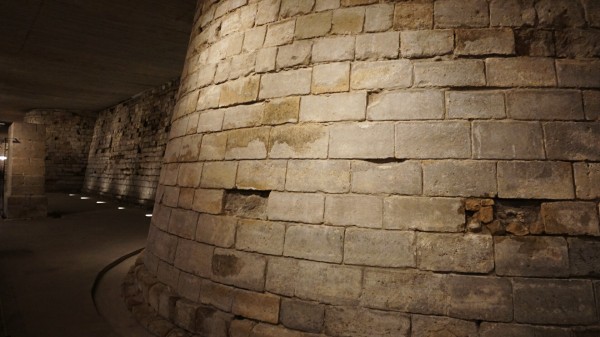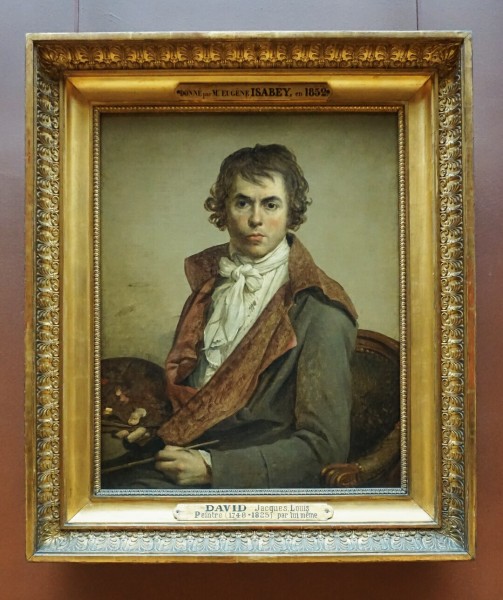Paris III – Day IV
Worth the wait and the selfie sticks.
- Before I fell asleep, I thought, “After I stop for a pain au chocolat, I’ll just mosey on down to that jewel of a museum, the Louvre.” Too bad it was 9 am when I rolled out of bed. By the time I arrived at the old palace, there was a long coiled line waiting for me.
- It was really wonderful to see so many people waiting to walk through the galleries of the 13th century monument. After about an hour of waiting, I was trying to stay positive. At the same time, I secretly wished someone could hold the line for a coffee run or that there was a fast pass for those that were not there to just see the Mona Lisa. It’s true I sound prickly but you really could tell who had come for selfies by the sticks locked and ready in their hands. Regardless, it was pretty amazing to think about the thousands upon thousands of people who still visit museums, especially in this”digital age” when many artworks are available online.
Historic note: “The first stone of the Louvre was laid in 1202. Originally designed as a major stronghold (thought it never came to be used as such) and a treasury. Not a palace to be lived in, it was only in the reign of Charles V (1364-80) that the Louvre, with windows struck through Philippe’s grimly functional arrow-slits and with fancifully decorative pointed roofs superimposed, became a palace fit for a king.” – Alistair Horne, Seven Ages of Paris: Portrait of a City
- Two hours later, I finally made it pass the stone threshold. I bought my ticket and quickly plotted a plan of action. With only five hours to look at hundreds of works, I had to prioritize and make some tough sacrifices. Anything not French, was out. This was a research trip after all. “Focus, focus, focus…” I constantly chanted as I passed tempting exhibitions. First priority, was to focus on the building. Viola, the heroine of The Histories of Idan, would soon sneak around these lofty wings and I needed to have enough details to describe them to readers.
- While I studied my surroundings, I noticed no one really looked closely at the building. If it was not so important for Book II, I might have missed a lot of details as well. Although the building has changed substantially since the 18th century, like many buildings in Paris, it has its layers. When you peel away one layer of paper or paint, a different taste of a different era is exposed. As one of the first museums in the world, it has morphed from a fortress, a palace, artists’ studios, and finally into a haven for art and its admirers.
- After focusing on the building, I made me way deep under the museum to study its fortress beginnings. From here, I went up to explore the Rococo, Neo-classical, and Romanticism galleries. It was exciting to imagine, Viola scurrying around corners of the palace searching for forbidden live drawing lessons or spying on artists in their studios.
“The Louvre was both the Académie Royale de Peinture et de Sculpture and the Académie d’Architecture. It held collections, artists’ studios, and lodgings were found in various odd corners of the building described as long badly lit corridors with endless stairways. The artists’ apartments were like little birds’ nests up beneath the roof.” – Howard C. Rice, Thomas Jefferson’s Paris
- As my time began to run out, I had to see Leonardo. For Lost in the City of Flowers, I had spent so many hours reading about THE Renaissance man, that I couldn’t leave without paying my respects. On my way to visit the Italian master, the number of visitors thickened. I stopped a long while at the Virgin of the Rocks, before visiting Leonardo’s main squeeze.
- Hopefully, the picture I snapped, speaks for itself. Although I had seen Leonardo’s work once before in a temporary exhibition at the National Gallery in Washington D.C., seeing his work again, was an emotional moment. Wouldn’t it be wonderful if some of the visitors near me had read Lost in the City of Flowers and that maybe it changed the way they thought about Leonardo da Vinci? To some of my fellow visitors, he might be more than the man who painted the Mona Lisa.
- With some more time and help from Viola, people might look at the Louvre a bit differently. No longer will it be a vessel for art but a reflection of our rich collective history.








